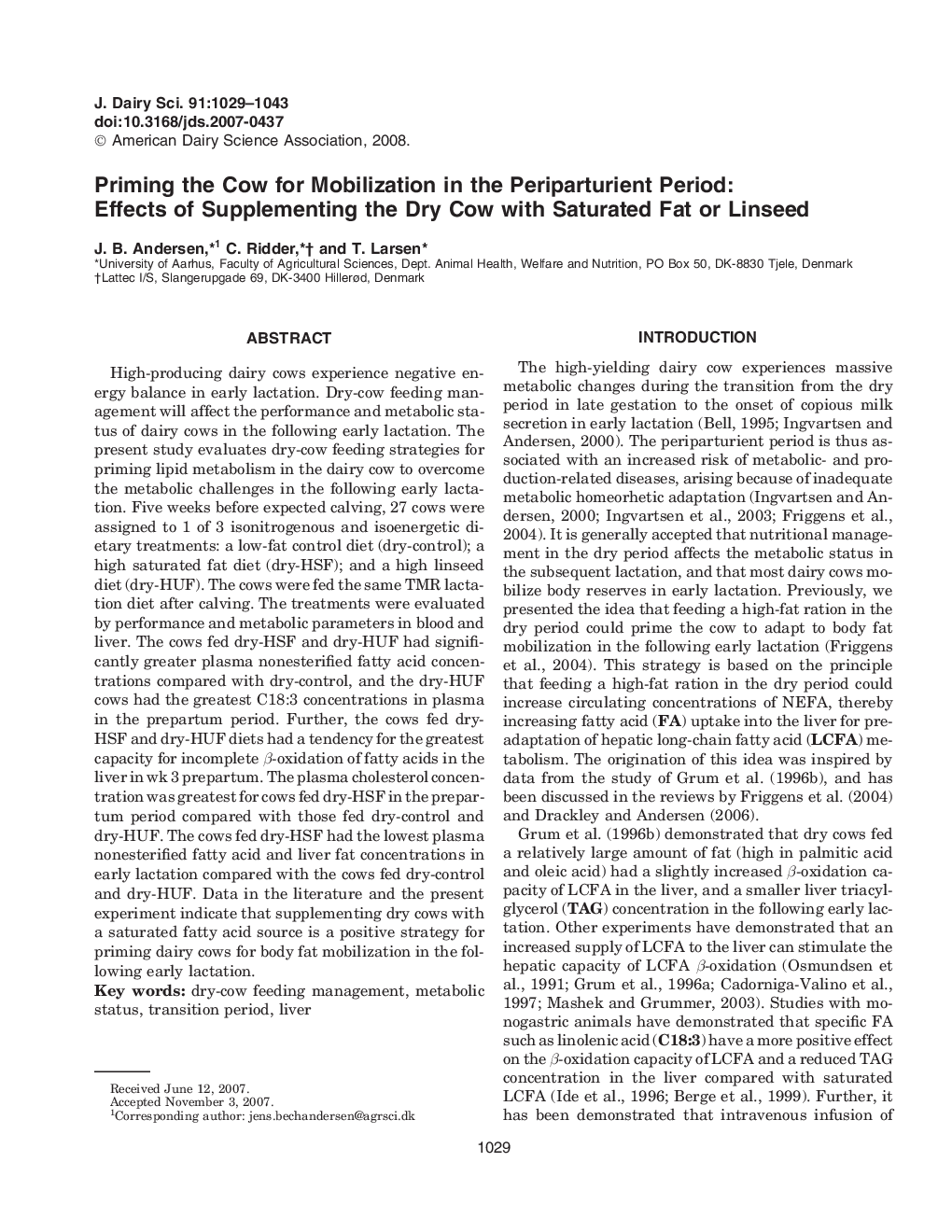| Article ID | Journal | Published Year | Pages | File Type |
|---|---|---|---|---|
| 2440501 | Journal of Dairy Science | 2008 | 15 Pages |
Abstract
High-producing dairy cows experience negative energy balance in early lactation. Dry-cow feeding management will affect the performance and metabolic status of dairy cows in the following early lactation. The present study evaluates dry-cow feeding strategies for priming lipid metabolism in the dairy cow to overcome the metabolic challenges in the following early lactation. Five weeks before expected calving, 27 cows were assigned to 1 of 3 isonitrogenous and isoenergetic dietary treatments: a low-fat control diet (dry-control); a high saturated fat diet (dry-HSF); and a high linseed diet (dry-HUF). The cows were fed the same TMR lactation diet after calving. The treatments were evaluated by performance and metabolic parameters in blood and liver. The cows fed dry-HSF and dry-HUF had significantly greater plasma nonesterified fatty acid concentrations compared with dry-control, and the dry-HUF cows had the greatest C18:3 concentrations in plasma in the prepartum period. Further, the cows fed dry-HSF and dry-HUF diets had a tendency for the greatest capacity for incomplete β-oxidation of fatty acids in the liver in wk 3 prepartum. The plasma cholesterol concentration was greatest for cows fed dry-HSF in the prepartum period compared with those fed dry-control and dry-HUF. The cows fed dry-HSF had the lowest plasma nonesterified fatty acid and liver fat concentrations in early lactation compared with the cows fed dry-control and dry-HUF. Data in the literature and the present experiment indicate that supplementing dry cows with a saturated fatty acid source is a positive strategy for priming dairy cows for body fat mobilization in the following early lactation.
Related Topics
Life Sciences
Agricultural and Biological Sciences
Animal Science and Zoology
Authors
J.B. Andersen, C. Ridder, T. Larsen,
